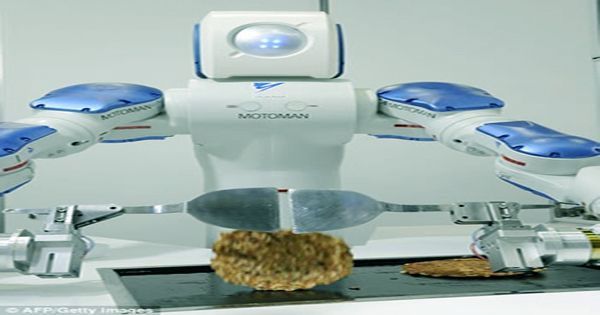Starting with the robots that supply Bratwurst to Berlin in California, we’ve started to see how machines around the world can play sauce-chefs. But scientists at Cambridge University have discovered how these culinary robots can not only do some of the heavy lifting work but also actually improve the food experience for the people they serve, showing some initial success in the robot trained to cook omelets. They trained a robot to make an omelette, published in the IEEE Robotics and Automation Letters Journal. You might be wondering why on earth, anyone out of weird feeling would bother to make such a car but as researchers have pointed out, determining whether a robot has successfully cooked food is an interesting source of controversy.
The research project is a collaboration between researchers at the University of Cambridge and the domestic appliance firm Beko that led scientists to take robotic cooking to new areas. To prepare pizzas, pancakes, and other items where robot chefs are made, the team was interested in how it would be possible to optimize robotic approaches and produce tasty food based on human feedback. The team of robot chefs was trained to perform a variety of techniques ranging from cracking eggs, whisking, gently stirring, and then finishing product plates to
making omelettes. Cambridge researchers equipped the robot with a machine learning algorithm developed that enabled it to generate personal responses from human samplers and refine its methods.
Cooking is an interesting problem for robotics because humans can never be perfectly objective in food, so how do we as scientists evaluate whether the robot has done a good job? Dr. Fumia Aida, from the engineering department at Cambridge, who led the study, said.
“We’re faced with another challenge, the subjectivity of the sense of human taste – people aren’t very good at giving absolute care, and usually give it to relatives when it comes to taste, says Aida. So we need machine learning algorithms – the
so-called batch algorithms – so that human testers can provide information based on comparative evaluation rather than sequential ones.
These assessments, combined with machine learning algorithms, enabled the robot to create omelets that improved reliably with quality over time, and according to Ida, “in general, tasted great”. The team says the exercise shows how machine-learning can be enhanced to quantitatively improve robotically produced foods.
Aida says, “An omelette is one of those foods that are easy to make but very difficult to make. “We thought it would be an ideal test for improving the skills of a robot chef and optimizing for taste, texture, smell, and appearance”.














